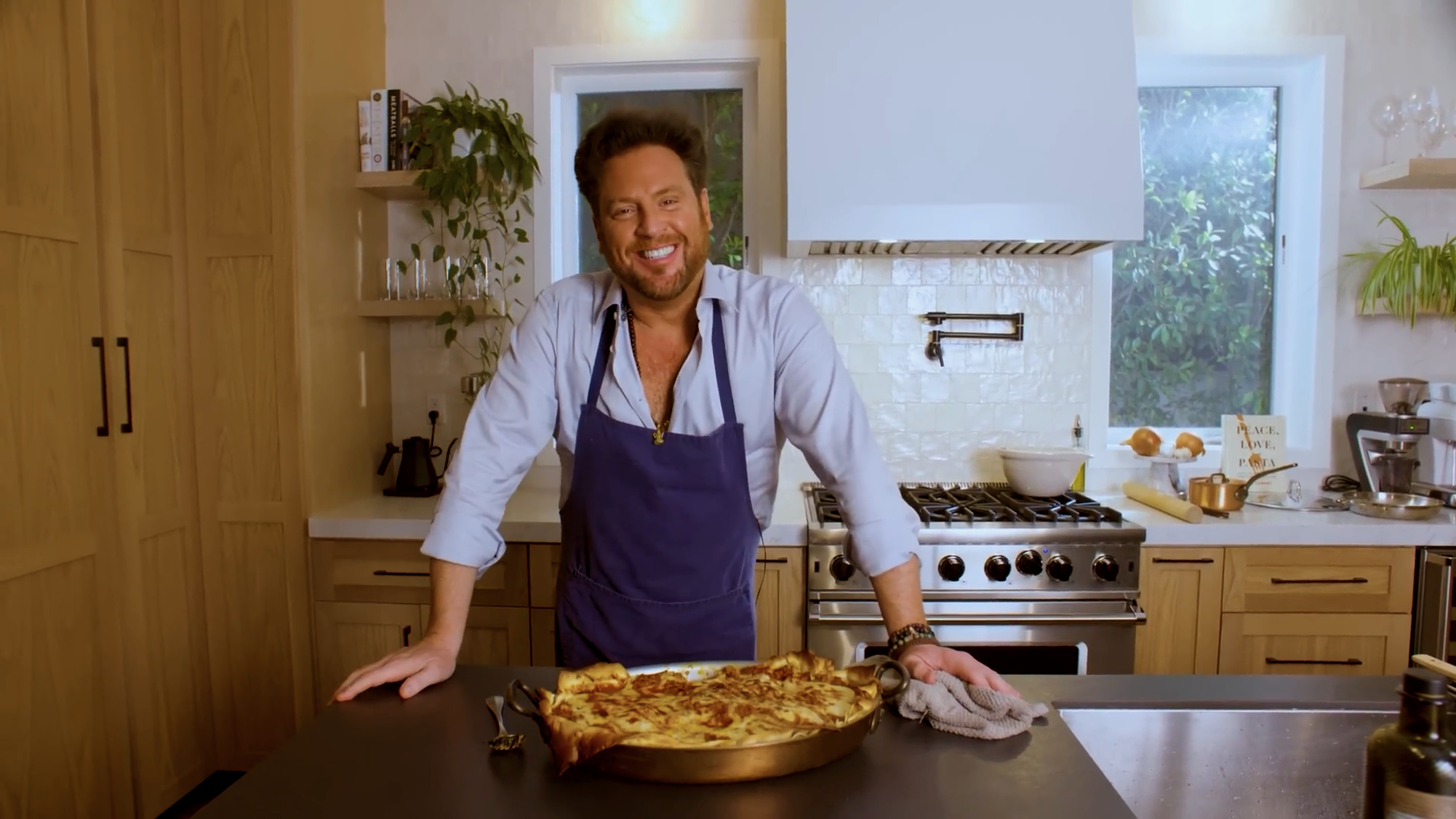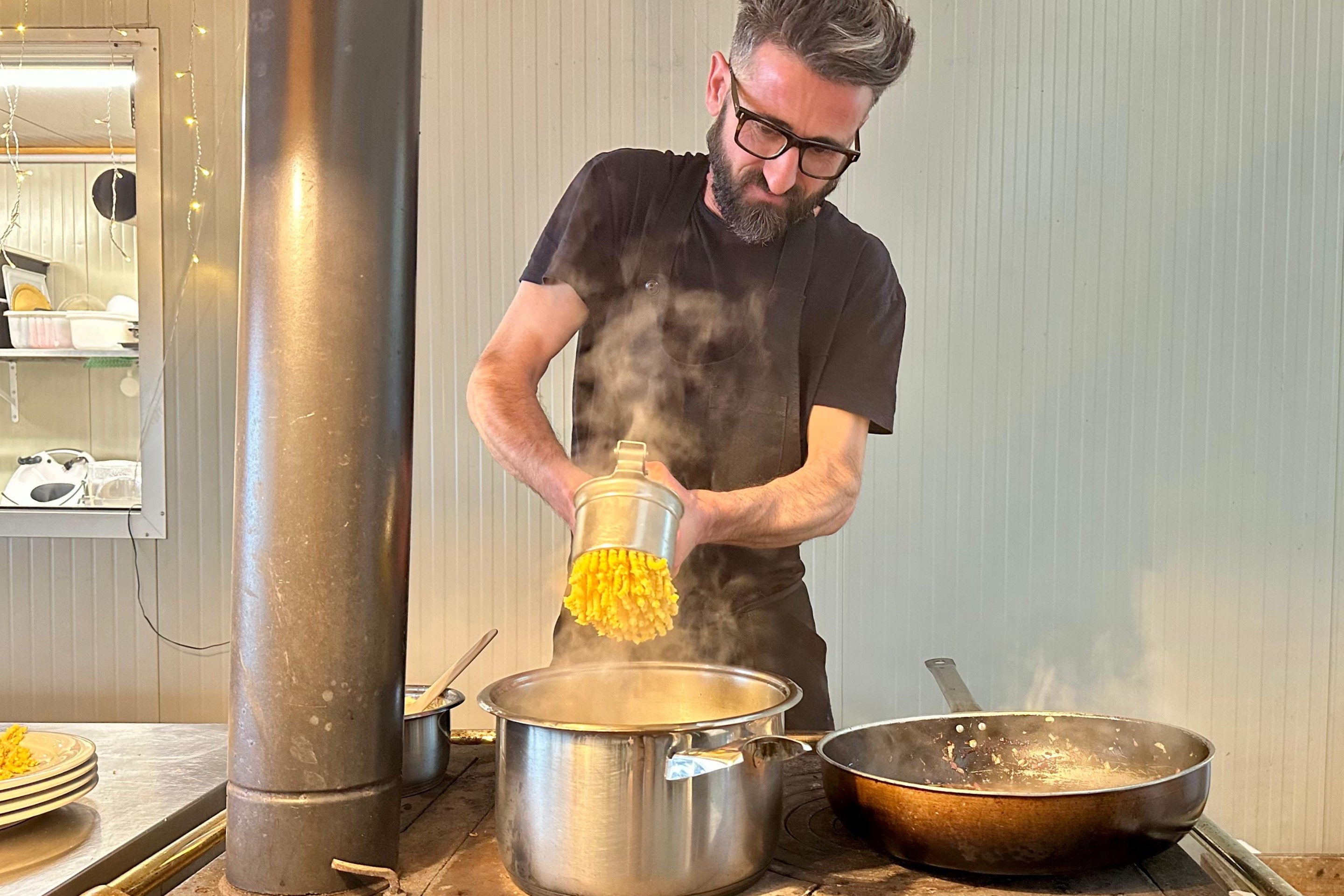Many people have tried to categorize Milan as a stop-over city, fashion city, or business city. But none of these descriptions seem quite right. Trying to fit it into the romanticized idea of Italy just doesn’t work. Milan doesn’t have the typical American dreamscapes of Tuscany or the Amalfi Coast. This modern yet antiquated city -- the provincial capital of the Lombardy region in Italy's most northern territory -- stands out for its uniqueness, and it's the city’s distinct character that makes it remarkable.
Milan is a city of movement— one that’s constantly changing while maintaining its antique charm and rich history. New skyscrapers are built next to the former residence and workplace of Leonardo da Vinci. There are bustling groups of young professionals bumping shoulders with slow-walking Sciure (the elderly and fabulously dressed women of Milan) as they all make their way to Aperitivo. Leather makers are toiling away in the shops that their families have owned for generations, sharing a city block with renowned fashion houses shaping this season’s upcoming trends. Milan is complex, and that’s where its beauty stems from. Milan is new and old and decisively Italian. There is room for everyone and everything here, among endless things to discover.
Milan is home to many events. Fashion week, Salone del Mobile, I-Days; in 2026, the Olympics will arrive in our small city. I fell in love with Milan while visiting for Identità Golose, an international chef’s conference. Within a few months, I’d picked up my life in New York and settled into my new home and country. I’ve implored family and friends to come visit me, and I have planned trips for many others. If I had three days in Milan, here’s what I’d do:
Day 1: San Babila, Risorgimento, Porta Venezia

The Northeast quarter of Milan is an exciting area of the city. Its eastward expansion is bringing fresh and exciting shops to the Risorgimento and Citta Studi areas. The area is particularly full of amazing cafes, both old and new. Begin your day with an espresso and pastry at Pasticceria Sissi. Or get caffeinated and educated at Cafezal Coffee Hub, where they select and roast their beans on location.
Milan is home to many house museums, unique spaces which give you a peek into the lives of notable Milanese. To see the first aristocratic residence, head past Milan’s pinkest residents, the flamingos at Villa Invernizzi. Arrive at the elegant Villa Necchi Campiglio. Observe how one noble family of the 1930s lived in this nearly perfectly preserved deco-style home (featured in House of Gucci). Or see the more eclectic side of some of Milan’s barons at Museo Bagatti-Valsecchi. The two brothers were keen collectors and filled their house with the most futuristic items they could find in the late 19th century. The design of the house is a lovingly ornate ode to the Renaissance. The staff is passionate and overflowing with interesting stories about the adventures of the brothers. Check for events at both house museums, specifically the citrus festival at Villa Necchi.

Stop for a spot of lunch in the outdoor garden at Lubar. Then, enter the Galleria d’Arte Moderna (GAM). See the works of some of the best Italian artists like Morandi, Hayez, and Modigliani. Later, amble through the Museum’s bucolic English Garden. No day in Milan is complete without Aperitivo! Have a Negroni Sbagliato at its birthplace, Bar Basso. For wine and a light dinner, try Osteria alla Concorenzza. The design evokes retro Italian trattorie while the chefs take the highest care with their quality ingredients to recreate traditional Milanese fare. If your day of sightseeing has whetted your appetite, try Bice. What started as a simple trattoria soon became adored by Milanese city icons. The restaurant has now evolved into a highly-respected Italian locale with cozy, classic interiors and upscale dishes. If you’ve got any kick left in you, enjoy some live music with a digestivo in hand at the new, swanky Rumore bar.

Day 2: Navigli, 5 Vie, Missori
Milan’s canal area, Navigli, and the Southeast neighborhoods house some of the most charming corners of the city. The area is dotted with vintage shops and Italian boutiques, as well notable restaurants. Pasticeria Cucchi is one of the city’s gems. An all-day eatery, Cucchi holds onto its 1950s allure. Sit in the sun and order a cappuccino and a mini cheesecake or chocolate tart. No trip to Milan is complete without a bit of shopping. Take advantage of the unique stores in this area and come home with something one of a kind. A few of my favorites: Cavalli e Nastri, for the best collection of designer vintage in the city; Cloister, a curated boutique for unique pieces from unknown designers; Antonioli, for luxury streetwear; Tenoha, for clothes and goods with a Japanese influence; Biffi, for classic Milanese attire. If you need to bring home a gift for the family, go to Pupi Solari Bambino. This fashion luminary changed focus to baby clothes that are made with such love and care, they’re sure to be passed down through the decades.

If you want to admire fashion instead of shop for it, go to Armani/Silos to experience the evolution of the fashion house. Or, if you want to abandon the fashion world, follow in the footsteps of Rossana Orlandi and explore her namesake gallery to see what’s up-and-coming for design.
This area is home to some of the finest dining spots in Milan. Confine offers an elevated take on pizza, with two talented chefs bringing a sophisticated touch to classic flavors. Osteria Serafina, a stylish and modern trattoria, delights with authentic Lombardian cuisine in a vibrant, buzzing atmosphere. The real standout, though, is Nebbia — one of Milan’s acclaimed “neo-trattorias.”
They blend fresh, seasonal ingredients with contemporary techniques while preserving the essence of traditional Italian cuisine. Indulge in the date butter paired with Cantabrian anchovies. Wash it all down with a fantastic wine from their extensive list.

Day 3: Brera, Garibaldi, Isola
Start your final day with a coffee and a light bite at Voce by Aimo e Nadia. The casual spot, from one of Milan’s most highly regarded restaurant groups, is nestled in a historic building and consists of a cafe, gelateria, shop and a small restaurant. Milan has no shortage of lovingly maintained landmarks. Luckily the three most notable are within walking distance of each other. Of course, you should visit Milan’s famed opera hall, Teatro alla Scala, shop under the crystal skylight of Galleria Vittorio Emmanuele II, and ogle the Gothic Duomo di Milano, the largest church in Italy. For something different, I would head over to ADI Design Museum. This unique museum showcases the winners of the Compass d’Oro award from 1954 to today. You’ll see an array of the best “Made in Italy” projects from ideas as large as the Milan Metro station interior designs to the small “Trattoclip” pen.
Make your way through the Biblioteca Alberi Milano in the Garibaldi area to the bustling Mercato Centrale. Here you can taste the country’s culinary delights from tip to toe. Crunch on some Riso al Salto (risotto cakes) or have a plate of Linguine Vongole.

Live your last few hours in the city like an Italian would: slowly. Walk around the streets of Brera and discover shops like Manee or Il Cirmolo. Have some gelato at Crema. Stroll inside the church at Piazza del Carmine. If it's the holiday season, you must bring home a panettone from Laboratorio Niko Romito; the fruitcake will quickly become one of your favorite desserts. There’s something exciting down every cobble-stoned street.

Celebrate the last supper at one of two Milanese trattorie: Osteria la Vecchia Lira or Da Martino. At La Vecchia Lira, savor the traditional flavors of saffron risotto and mondeghili (Milanese meatballs) served on checkered tablecloths in a lively and friendly environment. Wedged between busy Moscova and Garibaldi, the energy of the restaurant overflows into the surrounding streets where many Milanese sit for a spritz or gin & tonic till the late hours of the
night. Da Martino is the darling of the city. The restaurant has been passed down through the family for three generations. The fact that the sign still says pizzeria though they stopped serving pizza decades ago, the lack of music, and the simple interiors isn’t of worry to the family, and it won't be to you the moment you have a forkful of their fare. The menu is ever-changing but always uses Slow Food products. Remaining hyper-seasonal is in their DNA. Though they do
original takes on the classics; nothing is pretentious or too fancy. Every pasta you order is likely to be among the best you’ve ever tasted. The Cotoletta, a signature dish of Milanese cuisine, with garlicky marinated cherry tomatoes, is a must. One leaves Da Martino smiling, filled to the brim, and ready to tuck into bed for a good night’s sleep.
Where to Stay
Santa Sofia Milan: An Appetito favorite, Santa Sofia is perfectly located between energetic Navigli and the Duomo. The rooms have a modern but warm feel to them, and they are spacious for a city-break hotel. With a sprawling 7th floor terrace bar, Santa Sofia is the perfect place to relax and engage with some locals. Read our full review here.
Hotel Viu: This is the hotel in which I fell in love with Milan; my second home on weekend trips up from Modena. The space is sleek and contemporary, but a warm caramel and green color palette keeps the hotel cozy and approachable. The rooms are dimly lit and alluring, my favorite being the Executive Junior Suite. On a warmer day, relax on the terrace and enjoy Milan’s first rooftop pool. In winter, step outside of the greenery laden structure and discover Chinatown.
Armani Hotel: If you’ve come to Milan in the name of luxury, check into Armani Hotel. Designed by the minds behind the fashion house, Armani is the pinnacle of lavishness. The halls and rooms are so quiet, it’s almost crypt-like if the crypt was draped in designer textiles and crafted with refined taste. Grab a drink at the chic and sophisticated Bamboo Bar where you’ll rub shoulders with Milan’s "Who’s Who," under 30 feet ceilings and between walls of back-lit stone.







